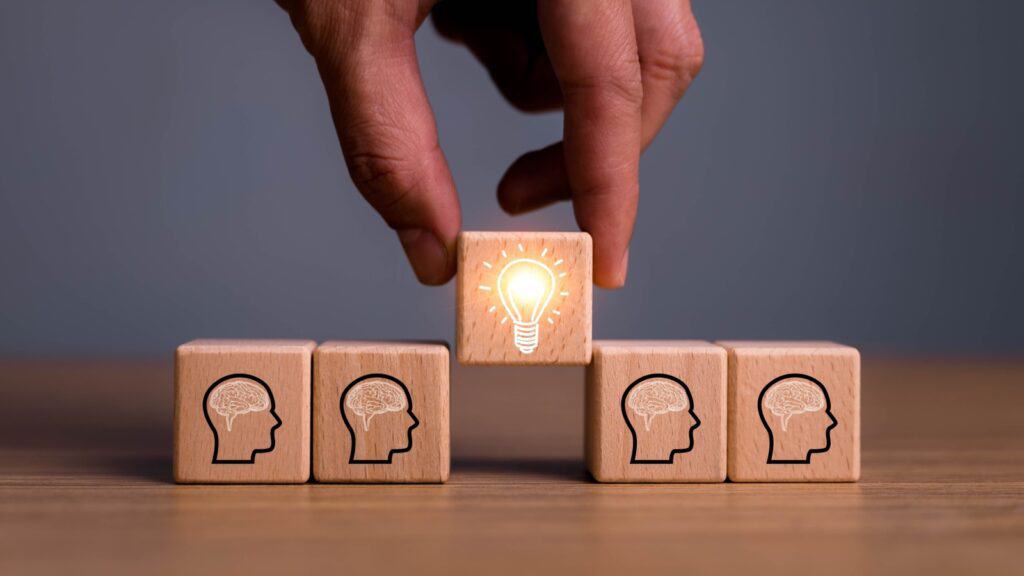Choosing The Right Light Bulb: A Buyers Guide
In the past, purchasing a light bulb was a straightforward task. You’d walk into a store, look for a 60-watt incandescent bulb, and be on your way. However, with the rapid advancements in lighting technology and the subsequent phasing out of traditional incandescent bulbs, buying light bulbs has become a more complex, yet rewarding, endeavor. In this article, we’ll explore the evolution of light bulbs, why old-style incandescent bulbs were outlawed, and how modern alternatives not only meet but exceed the expectations set by their predecessors.
The Age of Incandescence: A Brief History

The incandescent light bulb, invented by Thomas Edison in 1879, revolutionized the way we live, work, and play. For over a century, incandescent bulbs were the go-to choice for households worldwide. These bulbs worked by passing an electric current through a thin filament, usually made of tungsten, which would heat up and emit light. The warm, inviting glow of incandescent bulbs became a staple in homes, providing consistent and reliable lighting for generations.
Inefficiency Leads to Innovation

However, despite their popularity, incandescent bulbs were inherently inefficient. Only about 10% of the energy used by an incandescent bulb was converted into visible light; the remaining 90% was wasted as heat. This inefficiency, combined with the environmental concerns of excessive energy use, led to increasing scrutiny of the technology.
The Outlawing of Incandescent Bulbs: A Step Towards Sustainability

By the early 2000s, the world began to take a closer look at energy consumption and its impact on the environment. Incandescent bulbs, with their high energy use and short lifespan (typically around 1,000 hours), were identified as a significant contributor to energy waste. Governments around the globe started to enact legislation aimed at phasing out these inefficient bulbs in favor of more energy-efficient alternatives.
Energy Independence & Security Act

In the United States, the Energy Independence and Security Act of 2007 was a pivotal moment in the move away from incandescent lighting. The law set energy efficiency standards that effectively made it illegal to manufacture or import most types of incandescent bulbs by 2014. Similar legislation was adopted in Europe and other parts of the world, marking the end of an era for the classic light bulb.
The Rise of Modern Lighting: CFLs and LEDs

As incandescent bulbs were phased out, two main types of lighting technologies emerged to take their place: Compact Fluorescent Lamps (CFLs) and Light Emitting Diodes (LEDs).
Compact Fluorescent Lamps (CFLs)

CFLs were one of the first widely available alternatives to incandescent bulbs. They use a different mechanism to produce light, relying on a gas-filled tube and a small amount of mercury vapor. When electricity flows through the tube, it excites the gas, producing ultraviolet light. This UV light then interacts with a phosphor coating inside the tube, which emits visible light.
CFLs Are Energy-Efficient

CFLs are significantly more energy-efficient than incandescent bulbs, using about 70-80% less energy and lasting up to 10,000 hours. However, they had some drawbacks. Early CFLs were known for their slow warm-up time, taking several minutes to reach full brightness. They also had a reputation for producing harsh, cool-toned light that many found unappealing in home settings. Additionally, the presence of mercury meant that CFLs had to be disposed of carefully to avoid environmental contamination.
Light Emitting Diodes (LEDs)

While CFLs were a marked improvement over incandescent bulbs, it was the advent of LED technology that truly revolutionized the lighting industry. LEDs work by passing an electric current through a semiconductor material, which then emits light. This process is extremely energy-efficient, with LEDs using up to 90% less energy than incandescent bulbs and lasting anywhere from 15,000 to 50,000 hours.
The Versatile LED

Initially, LED bulbs were met with some resistance. Early models were expensive, and like CFLs, they often emitted a harsh, cool light. However, as technology advanced, LEDs rapidly improved in both quality and affordability. Today, LED bulbs are available in a wide range of color temperatures, from warm white to daylight, making them suitable for any setting. They also offer instant full brightness, dimming capabilities, and even smart features like remote control and color-changing options.
The Benefits of Modern Lighting

The shift from incandescent bulbs to modern lighting technologies has brought about numerous benefits, both for consumers and the environment.
Energy Efficiency

One of the most significant advantages of CFLs and LEDs is their energy efficiency. By consuming less power, these bulbs help reduce electricity bills and decrease overall energy demand. This is particularly important as the world continues to grapple with climate change and the need to reduce greenhouse gas emissions.
Longevity

The extended lifespan of modern bulbs means fewer replacements and less waste. While an incandescent bulb might last around 1,000 hours, a CFL can last up to 10,000 hours, and an LED can go for 15,000 to 50,000 hours. This longevity not only saves money in the long run but also reduces the environmental impact associated with manufacturing and disposing of bulbs.
Versatility

LEDs, in particular, offer a level of versatility that was unimaginable with incandescent bulbs. They are available in various shapes, sizes, and color temperatures, making them suitable for everything from cozy living rooms to high-precision workspaces. Many LEDs are also compatible with dimmer switches, and some even offer smart features like scheduling and color-changing, allowing for greater control over your lighting environment.
Environmental Impact

The environmental benefits of switching to modern lighting go beyond energy savings. The reduction in mercury use (as seen with the decline of CFLs) and the overall decrease in waste due to longer-lasting bulbs contribute to a more sustainable future.
The Evolution Continues: What to Look for When Buying Light Bulbs Today

When buying light bulbs today, the sheer variety of options can be overwhelming. Here are some key factors to consider:
- Brightness: Instead of looking at wattage, which measures energy use, consider lumens, which measure brightness. A typical 60-watt incandescent bulb produces about 800 lumens, so look for this number on the packaging of CFLs or LEDs.
- Color Temperature: Light color is measured in Kelvin (K). Lower Kelvin numbers (2,700K-3,000K) produce a warm, yellowish light similar to incandescent bulbs, while higher numbers (5,000K-6,500K) emit a cooler, more daylight-like light.
- Energy Star Rating: Look for bulbs with the Energy Star label, which ensures they meet certain efficiency and quality standards.
- Dimming Capability: If you have dimmer switches, make sure to choose bulbs that are compatible with them. Not all LEDs are dimmable, so this is an important feature to check.
- Smart Features: For those interested in home automation, consider smart bulbs that can be controlled via smartphone apps, voice assistants, or smart home systems.
A Brighter, More Efficient Future

The transition from incandescent bulbs to modern lighting technologies like CFLs and LEDs represents a significant step forward in energy efficiency and environmental stewardship. While the old-style bulbs may hold a certain nostalgia, the benefits of modern lighting far outweigh the drawbacks. Today’s consumers have more options than ever, allowing them to choose lighting that not only meets their needs but also contributes to a more sustainable future. As technology continues to advance, the future of lighting looks brighter—and more efficient—than ever before.
The 15 Canned Products Even Chefs Use At Home

Having been a professional recipe developer for over 30 years, I know my way in and out of commercial kitchens as well as the home kitchens. While some ingredients and pieces of equipment are more common in the professional environment, there is certainly overlap. These are the canned foods that professional chefs love and use any time they are cooking. These canned goods should be in your pantry. READ: The 15 Canned Products Even Chefs Use At Home
Unlocking The Power Of Fermented Foods For Gut Health

More people are increasingly mindful of their health, with a growing interest in understanding the role of the gut microbiome in promoting overall well-being. The consumption of fermented foods has garnered considerable attention as a way to support a healthy gut ecosystem. The idea of “fermented” foods might seem odd at first, but most of us are familiar with traditional pickles, and yogurt, to name possibly the two most common fermented items in the supermarket, and perhaps your own refrigerator. There is a diverse array of fermented foods that have the potential to transform and enhance your gut health – and to bring flavor to your meals. We have what you need to know!
Join Us

Join us on this empowering journey as we explore, celebrate, and elevate “her story.” The Queen Zone is not just a platform; it’s a community where women from all walks of life can come together, share their experiences, and inspire one another. Welcome to a space where the female experience takes center stage. Sign up for our newsletter so you don’t miss a thing, Queen!







